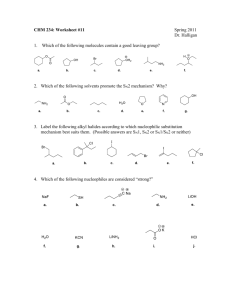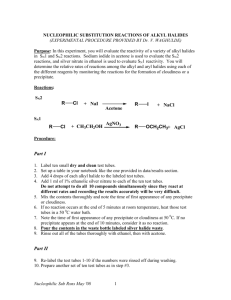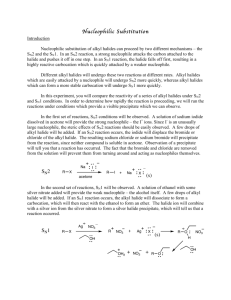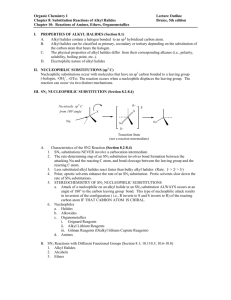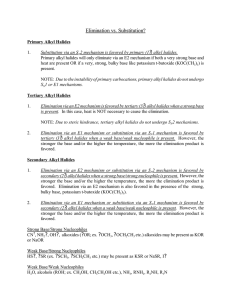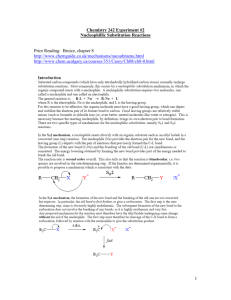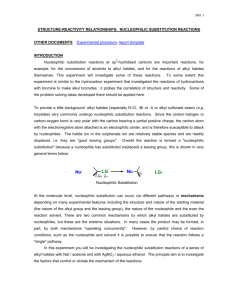Laboratory 1- Alkyl Halides6
advertisement
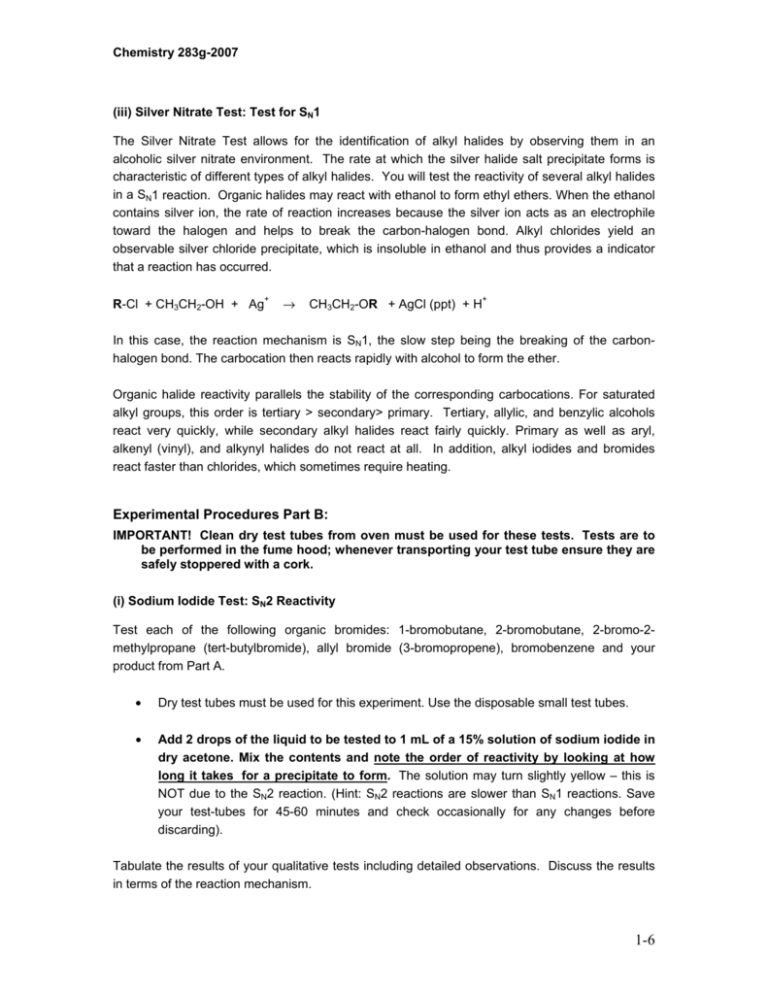
Chemistry 283g-2007 (iii) Silver Nitrate Test: Test for SN1 The Silver Nitrate Test allows for the identification of alkyl halides by observing them in an alcoholic silver nitrate environment. The rate at which the silver halide salt precipitate forms is characteristic of different types of alkyl halides. You will test the reactivity of several alkyl halides in a SN1 reaction. Organic halides may react with ethanol to form ethyl ethers. When the ethanol contains silver ion, the rate of reaction increases because the silver ion acts as an electrophile toward the halogen and helps to break the carbon-halogen bond. Alkyl chlorides yield an observable silver chloride precipitate, which is insoluble in ethanol and thus provides a indicator that a reaction has occurred. R-Cl + CH3CH2-OH + Ag+ → CH3CH2-OR + AgCl (ppt) + H+ In this case, the reaction mechanism is SN1, the slow step being the breaking of the carbonhalogen bond. The carbocation then reacts rapidly with alcohol to form the ether. Organic halide reactivity parallels the stability of the corresponding carbocations. For saturated alkyl groups, this order is tertiary > secondary> primary. Tertiary, allylic, and benzylic alcohols react very quickly, while secondary alkyl halides react fairly quickly. Primary as well as aryl, alkenyl (vinyl), and alkynyl halides do not react at all. In addition, alkyl iodides and bromides react faster than chlorides, which sometimes require heating. Experimental Procedures Part B: IMPORTANT! Clean dry test tubes from oven must be used for these tests. Tests are to be performed in the fume hood; whenever transporting your test tube ensure they are safely stoppered with a cork. (i) Sodium Iodide Test: SN2 Reactivity Test each of the following organic bromides: 1-bromobutane, 2-bromobutane, 2-bromo-2methylpropane (tert-butylbromide), allyl bromide (3-bromopropene), bromobenzene and your product from Part A. • Dry test tubes must be used for this experiment. Use the disposable small test tubes. • Add 2 drops of the liquid to be tested to 1 mL of a 15% solution of sodium iodide in dry acetone. Mix the contents and note the order of reactivity by looking at how long it takes for a precipitate to form. The solution may turn slightly yellow – this is NOT due to the SN2 reaction. (Hint: SN2 reactions are slower than SN1 reactions. Save your test-tubes for 45-60 minutes and check occasionally for any changes before discarding). Tabulate the results of your qualitative tests including detailed observations. Discuss the results in terms of the reaction mechanism. 1-6
